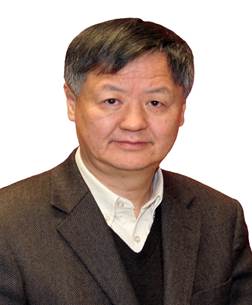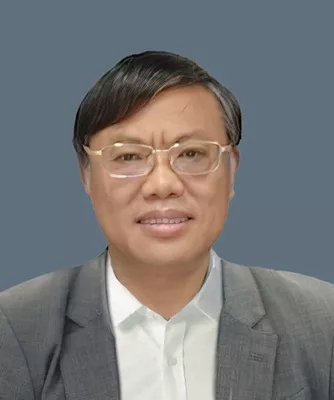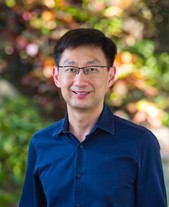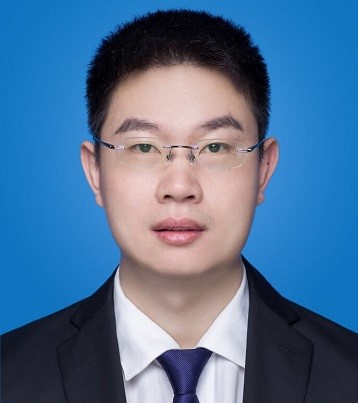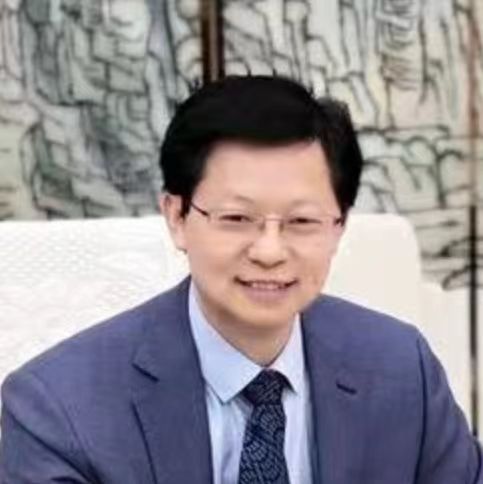Plenary Speakers
Nikhil R. Pal
PhD & Professor
Fellow of Indian National Academy of Engineering, Indian National Science Academy, Academician of the World Academy of Sciences, IEEE Fellow
Indian Statistical Institute, Calcutta, India
Title:Fuzzy Systems: Crossing the barrier of 100000 variables!
Abstract:In this era of Artificial Intelligence, a very common belief is that deep neural networks and in particular large language models (LLMs) are “all-cure” solutions. It is true that such systems have demonstrated their utility on a wide variety of applications. But all problems are not LLMs, all problems are not big-data problems, and more importantly such systems have issues that prevent them from using in critical applications like healthcare. Among various criticisms of such systems, the more frequently talked ones are lack of interpretability, explainability, and trustworthiness (even in a very narrow sense of the word). Fuzzy rule-based systems have some inherent characteristics that can help to realize interpretability of the model, explainability, and trustworthiness. However, two major issues arise as the dimension of the data set increases and these issues severely affect the desirable attributes of fuzzy systems. In fact, designing fuzzy rule-based systems for high dimensional data becomes difficult due to numerical underflow. In this talk we shall discuss how high dimensional fuzzy systems can be designed without reducing the dimension of the data before designing the rule-based system. The proposed system guarantees avoidance of underflow. Not only that, we shall also discuss, how explainability and trustworthiness of the high-dimensional system can be recovered. In this context, we shall demonstrate the effectiveness of the proposed scheme using datasets of dimension more than 100,000 both for classification and regression problems – to the best of our knowledge it is the first attempt to use data of dimension more than 100000 to design fuzzy rule-based systems!
Witold Pedrycz
PhD & Professor
IEEE Fellow,
Fellow of IEEE, Fellow of the Royal Society of Canada.Chair or member of IFSA/NAFIPS World Congress, IEEE Int. Conference on Fuzzy Systems, IEEE Congress on Computational Intelligence.Editor of IEEE Trans. SMC, IEEE Trans. Fuzzy Systems
University of Alberta, Edmonton, Canada
Title:Bringing Knowledge to Design and Analysis in Machine Learning
Abstract:Over the recent years, we have been witnessing an unpreceded progress in Machine Learning (ML) that has resulted in highly visible and impactful accomplishments reported in numerous areas of applications. Data are central and of paramount relevance to the design methodologies and algorithms of ML. While they are behind successes of ML, there are also far-reaching challenges that must be prudently addressed in light of the growing importance of quests for interpretability, transparency, credibility, stability, and explainability and a scope of applications and deployment requirements. Recently, knowledge associated with the problem for which ML models are constructed, has started to play a visible role and impacted the landscape of the ML methodologies by offering an original paradigm referred to as a knowledge-data ML. As a new discipline, knowledge-data ML focuses on a prudent and orchestrated engagement of data and knowledge in the design practices of the ML architectures. Data and knowledge arise at very different levels of abstraction with knowledge being formalized and represented at symbolic level. We advocate that to develop a cohesive and unified framework of coping with data and knowledge in learning processes, one has to reconcile highly distinct levels of abstraction and with this regard information granules play a pivotal role. We offer a taxonomy of knowledge by distinguishing between scientific and common-sense knowledge and elaborate on a spectrum of ensuing knowledge representation scheme. In the sequel, the main categories of knowledge-oriented ML design are discussed including physics-informed ML (with the reliance of scientific knowledge), an augmentation of data driven models through knowledge-oriented constraints, a development of granular expansion of the data-driven model and ways of building ML models in the presence of knowledge conveyed by rules. When analyzing the proposed categories, it is also clearly explained how the new ML environment helps avoid a growing effect of data blinding.
Yew-soon Ong
PhD & Professor
IEEE Fellow, Fellow of AAIA, Fellow of the International Eurasian Academy of Sciences, Registered Professional Engineer (USA), Fellow of Chinese Automation Association, Managing Director of the Chinese Academy of Automation
Nanyang Technological University, Singapore
Title:Foundations and Recent Developments in Transfer and Multitask Optimization
Abstract:Traditional optimization typically starts from scratch, assuming zero prior knowledge about the task at hand. Classical optimization solvers generally do not automatically improve with experience. In contrast, humans routinely draw from a pool of knowledge from past experiences when faced with new tasks. This approach is often effective, as real-world problems seldom exist in isolation. Similarly, artificial systems are expected to encounter numerous problems throughout their lifetime, many of which will be repetitive or share domain-specific similarities. This perspective naturally motivates the development of advanced optimizers that replicate human cognitive capabilities, leveraging past lessons to accelerate the search for optimal solutions to novel tasks. This talk will provide an overview of the origins and foundations of Transfer and Multitask Optimization and present some of the recent works on Generative AI and Large Language Models based Multi-factorial Evolutionary Algorithms for conceptual design and machine learning model distillation.
Jun Wang
PhD & Professor
IEEE Fellow, IAPR Fellow,the Editor-in-Chief of the IEEE Transactions on Cybernetics,recipient of an IEEE Transactions on Neural Networks Outstanding Paper Award and APNNA Outstanding Achievement Award, Neural Networks Pioneer Award from IEEE Computational Intelligence Society
City University of Hong Kong, Hong Kong, China
Title:The State of the Art of Collaborative Neurodynamic Optimization
Abstract:The past four decades witnessed the birth and growth of neurodynamic optimization, which has emerged as a potentially powerful problem-solving tool for constrained optimization due to its inherent nature of biological plausibility and parallel and distributed information processing. Despite the success, almost all existing neurodynamic approaches a few years ago worked well only for optimization problems with convex or generalized convex functions. Effective neurodynamic approaches to optimization problems with nonconvex functions and discrete variables are rarely available. In this talk, the advances in neurodynamic optimization will be presented. Specifically, In the proposed collaborative neurodynamic optimization framework, multiple neurodynamic optimization models with different initial states are employed for scattered searches. In addition, a meta-heuristic rule in swarm intelligence (such as PSO) is used to reposition neuronal searches upon their local convergence to escape local minima toward global optima. Problem formulations and experimental results will be elaborated to substantiate the viability and efficacy of several specific paradigms in this framework for machine learning, model predictive control, vehicle-task assignment, vehicle trajectory generation, energy load dispatching, and financial portfolio selection.
Tingwen Huang
PhD & Professor
IEEE Fellow , Fellow of AAIA,Changjiang Chair Professor, , Academician of the International Academy for Systems and Cybernetic Sciences , and Member of the European Academy of Sciences and Arts
Texas A&M University at Qatar Doha, Qatar
Title:Brief Introduction to AI and Several Algorithms for Optimization Problems
Abstract:A brief introduction to the development of artificial intelligence includes the 2012 deep neural network winning the ImageNet image recognition competition , and the 2016 AlphaGO victory over the Go world champion, ChatGPT. Algorithms plays a critical role in artificial intelligence. Then, two algorithms for optimization problems are introduced. One is to find the optimal solution of the energy trading problem of microgrid based on reinforcement learning algorithm. No information about the distribution of proceeds is available a priori, and the strategy chosen by each microgrid is private to the adversary. To address this challenge, a repetitive game-based new energy trading framework enables each microgrid to individually randomly select a strategy to maximize his/her average income. The other is an optimization algorithm based on distributed asynchronous broadcasting, which solves the distributed convex optimization problem on unbalanced directed multi-agent (without central coordinator) networks with inequality constraints. Not only does the algorithm allow agent updates to be asynchronous in a distributed manner, but the step sizes of all agents are uncoordinated. An important feature of the proposed algorithm is that it deals with constraint optimization problems in the case of unbalanced directed networks, the communication of which may be affected by possible link failures.
De-Shuang Huang
PhD & Professor
IEEE Fellow, Fellow of AAIA, Fellow of International Association for Pattern Recognition, Member of China Award Committee of ACM SIGBIO,Director of Biomedical Data Mining and Computing Professional Committee of China Bioinformatics Society, Vice Director of Bioinformatics Professional Committee of China Computer Federation.
Eastern Institute of Technology, Ningbo, China
Title:Biological Motifs Mining Based on Deep Learning Features
Abstract:Transcription factor/Translation factor (TF) play a central role in gene regulation. Knowing the binding specificities of TFs is essential for developing models of the regulatory processes in biological systems and for deciphering the mechanism of gene expression. In this talk, I will first present the fundamental issue for motif prediction of biological sequences, then systematically present motif prediction of biological sequences in combination with the popular emerging technology “Deep Neural Networks”. Firstly, several classical models for deep neural network and the research status of biological sequence motif prediction will be briefly introduced, and the existing shortcomings of deep-learning based motif prediction is discussed, some motif prediction methods including high-order convolutional neural network architecture, weakly-supervised convolutional neural network architecture, deep-learning based sequence + shape framework and bidirectional recurrent neural network for DNA motif prediction are briefly overviewed. Secondly, some latest results are importantly presented. Finally, some new research problems in this aspect will be pointed out and over-reviewed.
Kay Chen Tan
PhD & Professor
IEEE Fellow, Chair Professor (Computational Intelligence) of the Department of Computing, The Hong Kong Polytechnic University, Vice-President (Publications) of IEEE Computational Intelligence Society, Honorary Professor at University of Nottingham in UK, Chief Co-Editor of Springer Book Series on Machine Learning: Foundations, Methodologies, and Applications
Hong Kong Polytechnic University, Hong Kong, China
Title:When Evolutionary Computation Meets Large Language Models
Abstract:The Large Language Models (LLMs) have significantly advanced natural language processing, demonstrating extraordinary proficiency across diverse applications. This presentation introduces our researc h works in the intersection of evolutionary computation and LLMs. Firstly, the LLMs' developmental trajectory and intrinsic features will be explored, together with their synergies and benefits in evolutionary search and optimization. Following this, we will examine the integration of LLMs within the evolutionary computation frameworks. This includes tackling simple optimization challenges and evaluating LLMs' potential risks and distinctive benefits in practical applications. Furthermore, we will highlight several of our research studies that exploit LLMs' capabilities to amplify the efficiency and effectiveness of evolutionary computation in solving intricate problems, such as causal discovery, neural architecture search, and logistics.
Dongrui Wu
PhD & Professor
IEEE Fellow, the Editor-in-Chief of IEEE Transactions on Fuzzy Systems, Professor and Deputy Director of the Key Laboratory of the Ministry of Education for Image Processing and Intelligent Control, School of Artificial Intelligence and Automation
Huazhong University of Science and Technology, Wuhan, China
Title:Privacy-Preserving Brain-Computer Interfaces
Abstract:A brain-computer interface (BCI) enables direct communication between the brain and external devices. It can be used to research, enhance or repair human cognitive and sensory-motor functions. Electroencephalograms (EEGs) are frequently used in BCIs. However, EEGs contain rich user private information, e.g., health, emotion, etc., beyond BCI task related information. Privacy protection is very important to the broad applications of EEG-based BCIs. This talk will introduce machine learning algorithms for privacy-preserving BCIs.
Yongduan Song
PhD & Professor
IEEE Fellow, Fellow of AAIA, Fellow of the International Eurasian Academy of Sciences, Registered Professional Engineer (USA), Fellow of Chinese Automation Association, Managing Director of the Chinese Academy of Automation
Chongqing University, Chongqing, China
Title:Adaptive Control Mechanisms in Brain-Inspired Systems: Innovations and Applications
Abstract:The rapid advancements in neuroscience and artificial intelligence have paved the way for brain-inspired intelligent control systems. This report delves into the innovations and applications of adaptive control mechanisms inspired by the neural architectures and functionalities observed in biological brains. We explore how these systems replicate the flexibility, robustness, and efficiency of natural neural networks, thereby enhancing control systems in areas such as autonomous systems and robotics. Furthermore, we address future directions and potential barriers, suggesting pathways for further research and development.
Address : No. 66 , West Changjiang Road , Huangdao District , Qingdao , China , 266580




